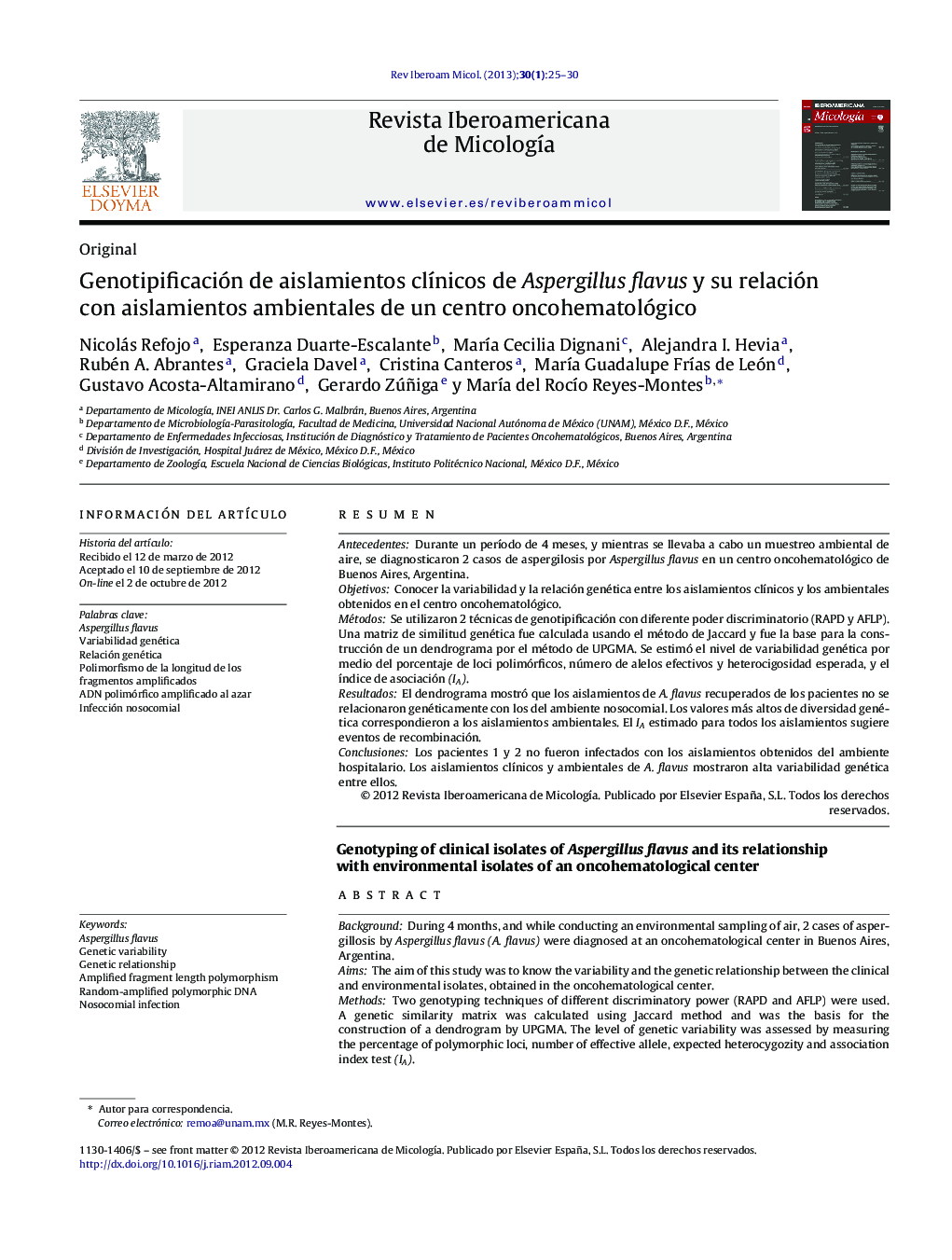| Article ID | Journal | Published Year | Pages | File Type |
|---|---|---|---|---|
| 3418843 | Revista Iberoamericana de Micología | 2013 | 6 Pages |
ResumenAntecedentesDurante un período de 4 meses, y mientras se llevaba a cabo un muestreo ambiental de aire, se diagnosticaron 2 casos de aspergilosis por Aspergillus flavus en un centro oncohematológico de Buenos Aires, Argentina.ObjetivosConocer la variabilidad y la relación genética entre los aislamientos clínicos y los ambientales obtenidos en el centro oncohematológico.MétodosSe utilizaron 2 técnicas de genotipificación con diferente poder discriminatorio (RAPD y AFLP). Una matriz de similitud genética fue calculada usando el método de Jaccard y fue la base para la construcción de un dendrograma por el método de UPGMA. Se estimó el nivel de variabilidad genética por medio del porcentaje de loci polimórficos, número de alelos efectivos y heterocigosidad esperada, y el índice de asociación (IA).ResultadosEl dendrograma mostró que los aislamientos de A. flavus recuperados de los pacientes no se relacionaron genéticamente con los del ambiente nosocomial. Los valores más altos de diversidad genética correspondieron a los aislamientos ambientales. El IA estimado para todos los aislamientos sugiere eventos de recombinación.ConclusionesLos pacientes 1 y 2 no fueron infectados con los aislamientos obtenidos del ambiente hospitalario. Los aislamientos clínicos y ambientales de A. flavus mostraron alta variabilidad genética entre ellos.
BackgroundDuring 4 months, and while conducting an environmental sampling of air, 2 cases of aspergillosis by Aspergillus flavus (A. flavus) were diagnosed at an oncohematological center in Buenos Aires, Argentina.AimsThe aim of this study was to know the variability and the genetic relationship between the clinical and environmental isolates, obtained in the oncohematological center.MethodsTwo genotyping techniques of different discriminatory power (RAPD and AFLP) were used. A genetic similarity matrix was calculated using Jaccard method and was the basis for the construction of a dendrogram by UPGMA. The level of genetic variability was assessed by measuring the percentage of polymorphic loci, number of effective allele, expected heterocygozity and association index test (IA).ResultsThe dendrogram reveals that the A. flavus isolates recovered from the patients were not genetically related to those gotten from the rooms occupied by the patients. The environmental isolates had higher values of genetic diversity than the clinical isolates. The IA estimated for all the isolates suggest that recombination events occurred.ConclusionsPatients 1 and 2 were not infected with isolates from the nosocomial environment. Clinical and environmental isolates of A. flavus showed high genetic variability among them.
